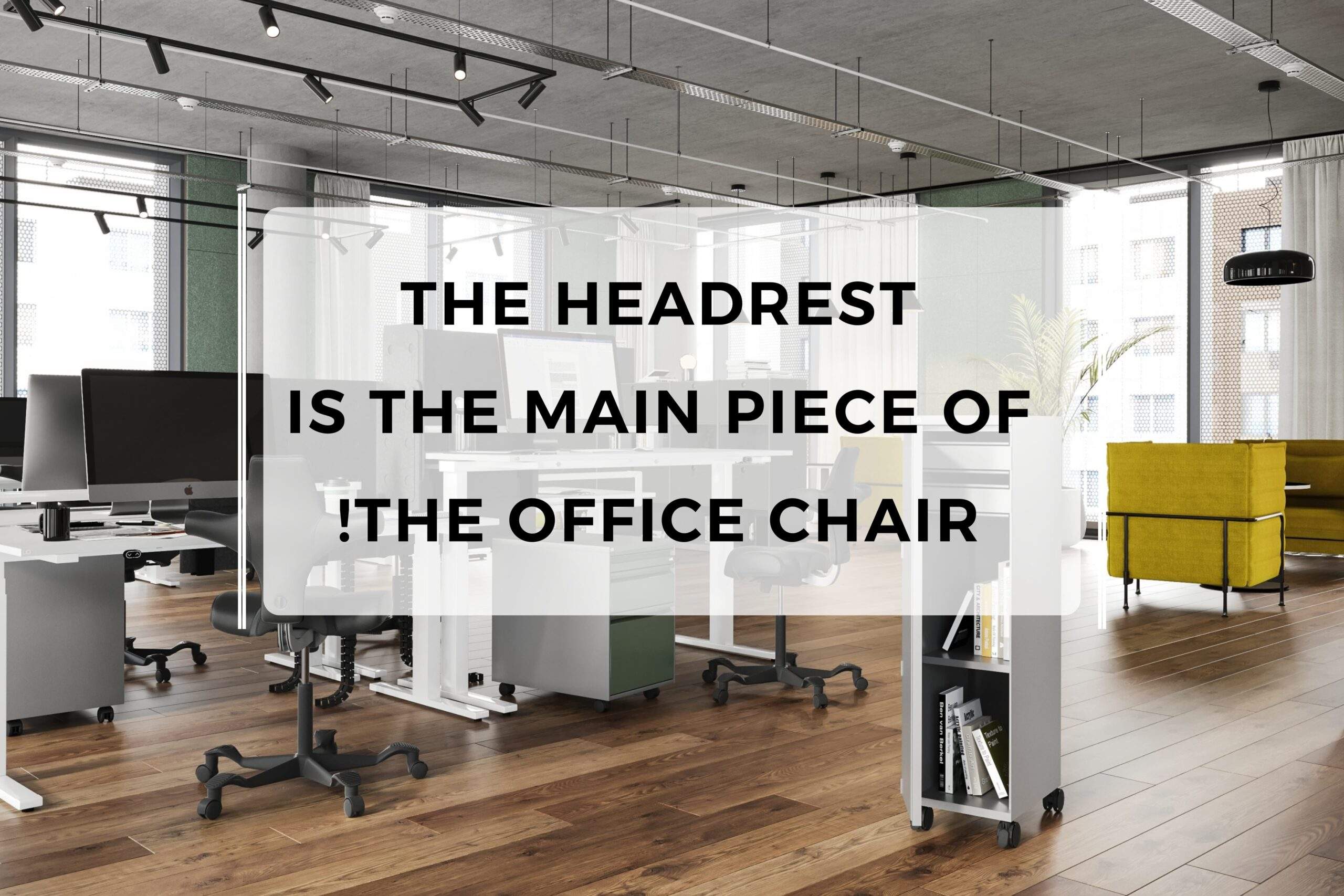Headrest is one of the optional accessories that are not always included in the office chair. However, the question is whether the headrest is necessary or just a luxury.
To answer this question, we must consider different factors. For example, if you sit at your computer for long hours, the headrest may be beneficial to support the neck and reduce fatigue. On the other hand, if your job requires constant moving or standing, the headrest may not be needed. Furthermore, some people find headrests uncomfortable or even distracting. As a result, the answer varies from one person to another. Also, the way of using the office chair determines the headrest’s importance.
The role of the headrest
Having an office chair with a headrest is an advantage that is usually ignored, but it may play a significant role in providing comfort and support throughout the extended sitting. The headrest is designed to support the head, neck, and shoulders to help minimize the pressure on these areas for those who spend prolonged periods on the phone or staring at a computer screen.

Evaluating the need for a headrest
This evaluation depends on many factors, such as:
1-Duration of use
For those who spend so much time sitting at their desks, the headrest can offer the support and comfort they need. The headrest becomes handy if you sit at your desk for more than four hours daily.
2-Nature of the job
The type of your work can play a role in identifying whether you need a headrest or not. If your job involves a lot of phone calls or reading, a headrest can be helpful to keep your head in a healthy position while performing these tasks.
Types of office chairs
There are various types of office chairs in the market to choose from. Some chairs are provided with built-in headrests, whereas others don’t have headrests at all. There are also chairs with separable headrests that you can remove or reattach.
1- Chairs with built-in headrests
These chairs are designed to provide extra support for the head and neck. They are perfect for those who spend long hours sitting at their desks and need more support to prevent shoulder and neck pain. Headrests are usually adjustable to allow users to find the most convenient position.

2- Chairs without headrests
Some office chairs don’t come with headrests. These chairs are typically affordable and may be suitable for individuals who don’t need additional support for the neck and head. Nevertheless, it is worth noting that sitting for prolonged hours without proper support may lead to discomfort and feeling pain.

3- Chairs with separable (Detachable) headrests
These chairs are counted as the best choice. The users can attach and remove the headrest whenever they want. This type is perfect for individuals who prefer having the flexibility to set their chairs according to their needs.
Headrests Advantages
The headrest is a common feature in office chairs that provides head and neck support:
1- Reducing neck pain: the headrest helps keep the neck in a neutral position to reduce neck muscle strain.
2- Improving posture: the headrest promotes neck and head alignment with the spine to alleviate back pain caused by poor sitting postures.
3- Enhancing comfort: the headrest provides a comfortable spot to relax the head during breaks.
Headrests Disadvantages
1- Limited movement: the headrest may limit movement, which makes it difficult to tilt your head or look around. This may be a problem, especially for people who need to move repeatedly during the day.
2- Not suitable for all: the headrest may not be good for everyone. Some people may find the headrest too high or too low, which can cause pain or discomfort. This is specifically applicable to office chairs that come with fixed headrests.
3- More money: adding a headrest to the office chair may increase the cost of the chair, which could be a major concern for those with a limited budget.
It is worth mentioning that the office chair plays an essential role in adding comfort and promoting user productivity. Also, some factors can enhance comfort and reduce pain caused by extended sitting other than the headrest. This includes the length and height of the backrest, which differs according to the chair type and design. Therefore, most existing types go under one of these categories: chairs with high-length backrests and chairs with medium-length backrests.
Here are some of the advantages of these two types:
Chairs with high-length backrests:
- Maximum support, especially for neck and shoulders.
- Help promote better posture.
- Comfortable for prolonged sitting.
- Best choice for sitting motionless for long hours during work days.
Chairs with medium-length backrests:
- Provide great support for the lower back.
- Better and easier movement in general.
- Perfect support for the spine for those who suffer from issues in the back and lumbar area.
- Lighter in weight.
Important points to consider before deciding to buy either of these types:
1- Budget
Adjustability is one of the factors that make the office chair very expensive. The more adjustable options the chair has, the higher it will cost. Therefore, high-length backrest chairs are pricier than medium-length backrest chairs since they have more options regarding control and comfort.
2- Appropriate space
Choosing the chair type relies on the height of the desk. Thus, the high-length backrest chairs are not a good choice if the desk is low because it will not fit in the workspace.
The purpose of having the chair is the most crucial thing you need to keep in mind while shopping.
Take a moment and ask yourself: ‘Why do I want to use this chair? And where to use it?’
If you are looking for a chair that is excellent for gaming, you want a good one for extended periods of use. This means that the high-length backrest chair may suit your needs more perfectly. Likewise, if you wish to use this chair during working hours, you need a comfortable one to sit on for prolonged periods. This means, again, that you may prefer a chair with a high-length backrest.
Nonetheless, if you are looking for a small and plain office chair suitable for crowded cubicles or students’ dormitories, the medium-length backrest chair may better serve that smaller space. Everything depends on what you are looking for and what you want to get from the office chair. Also, it is essential to take into consideration body areas that are supported by different chairs.
Finally, the necessity of having a headrest with the office chair depends on individual needs. As for prolonged office work, the headrest may offer valuable support, but for those who move constantly, the headrest may not be required. Pay attention to factors like budget, space, and intended use when choosing a chair, and prioritize well-being and comfortable support to improve productivity and health while sitting for long hours.

